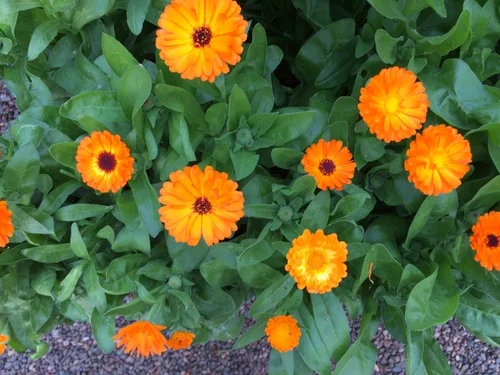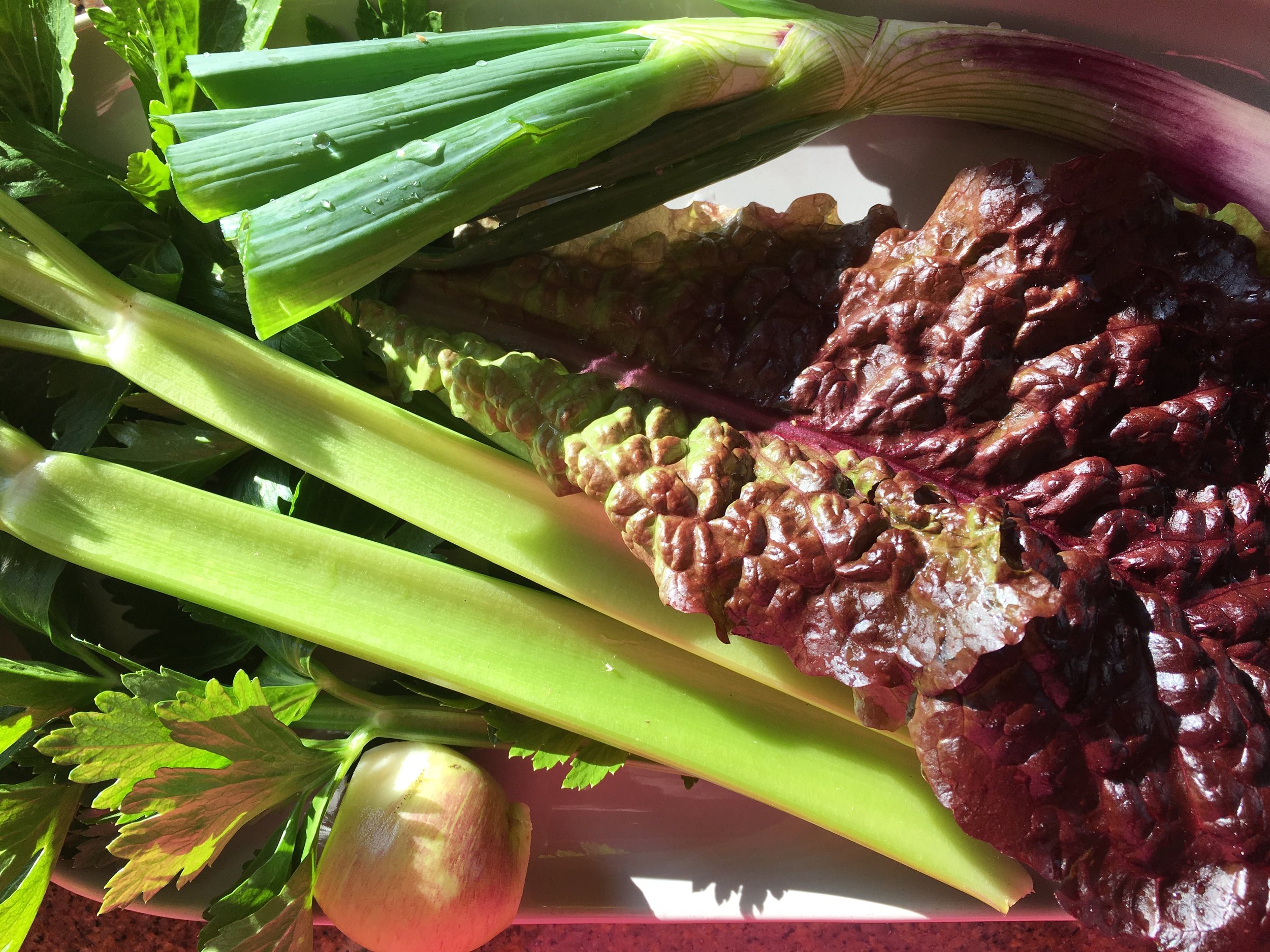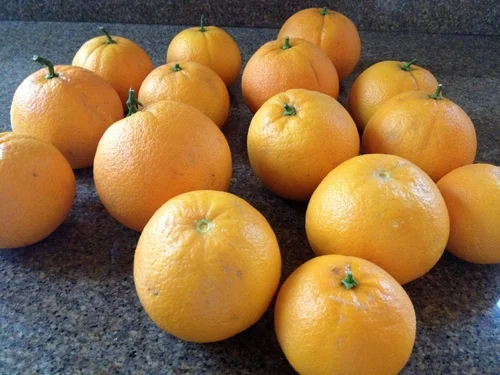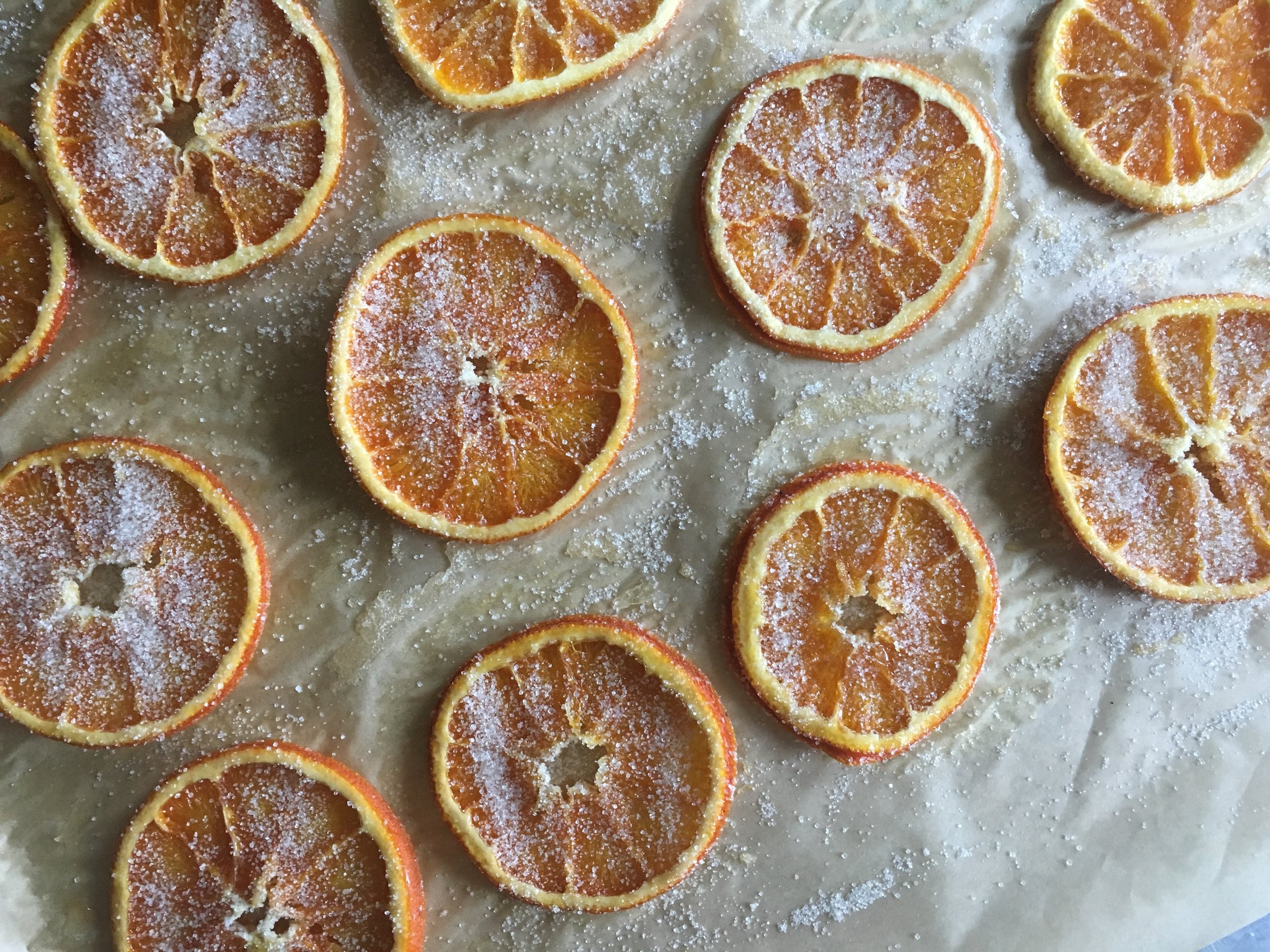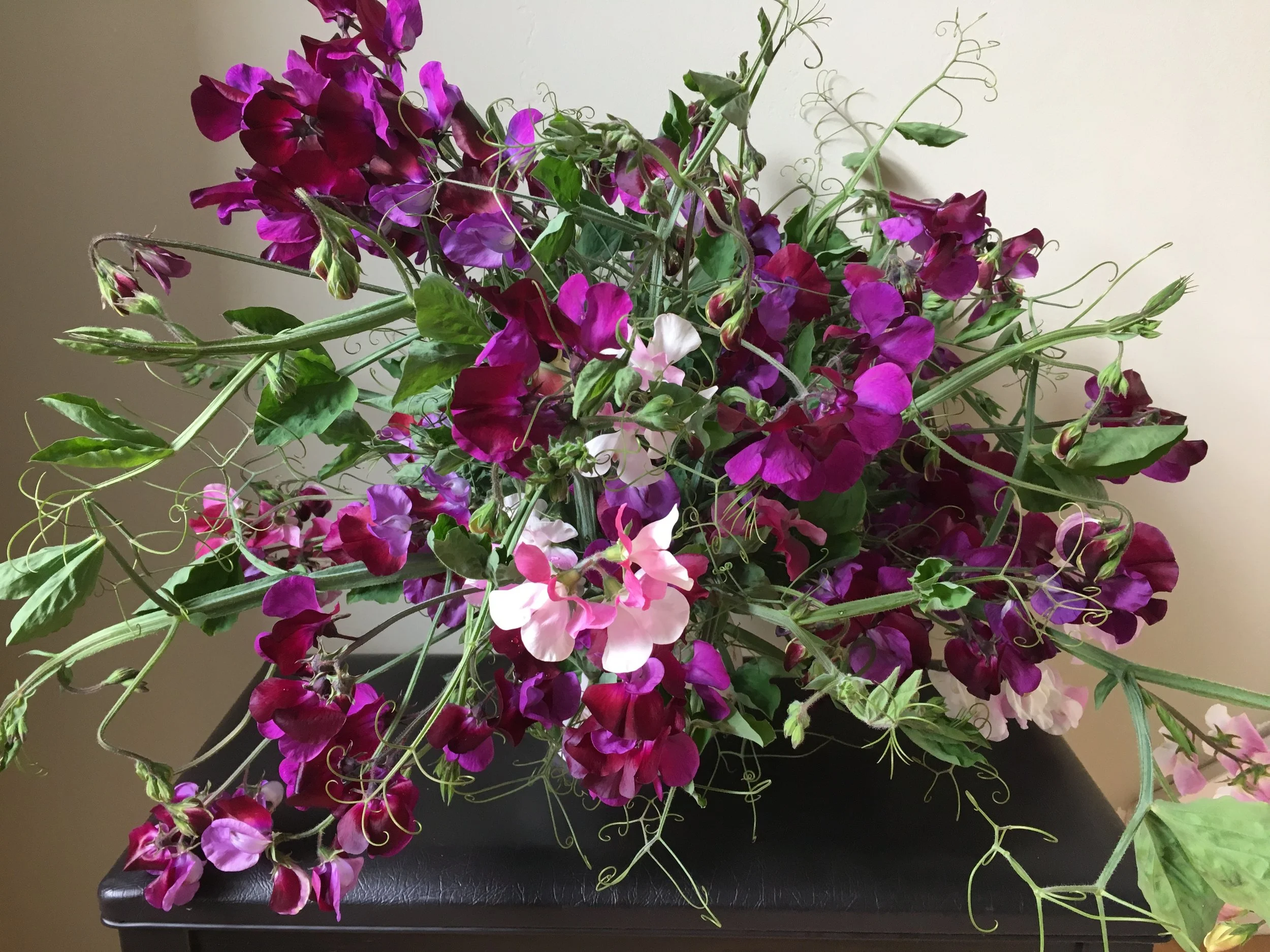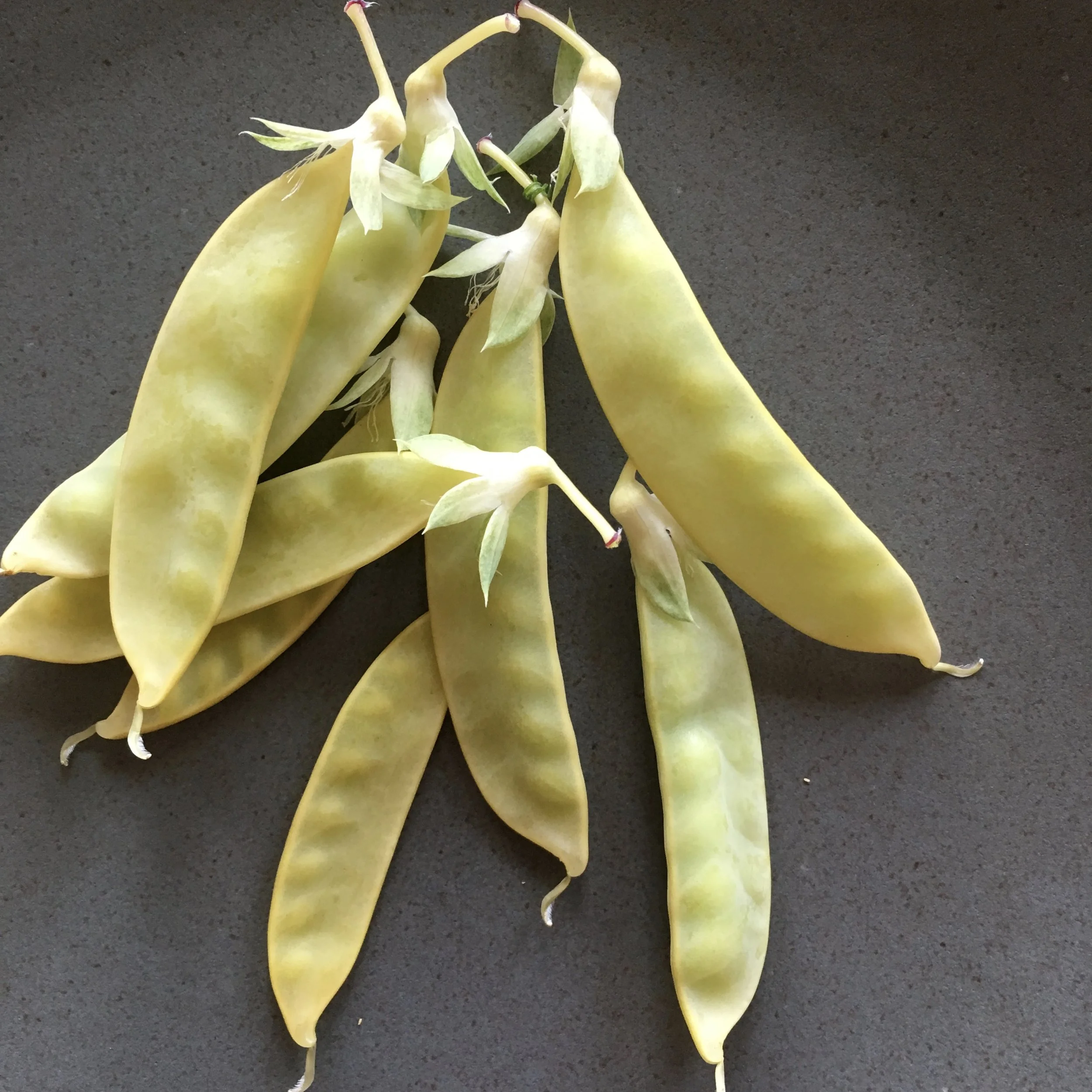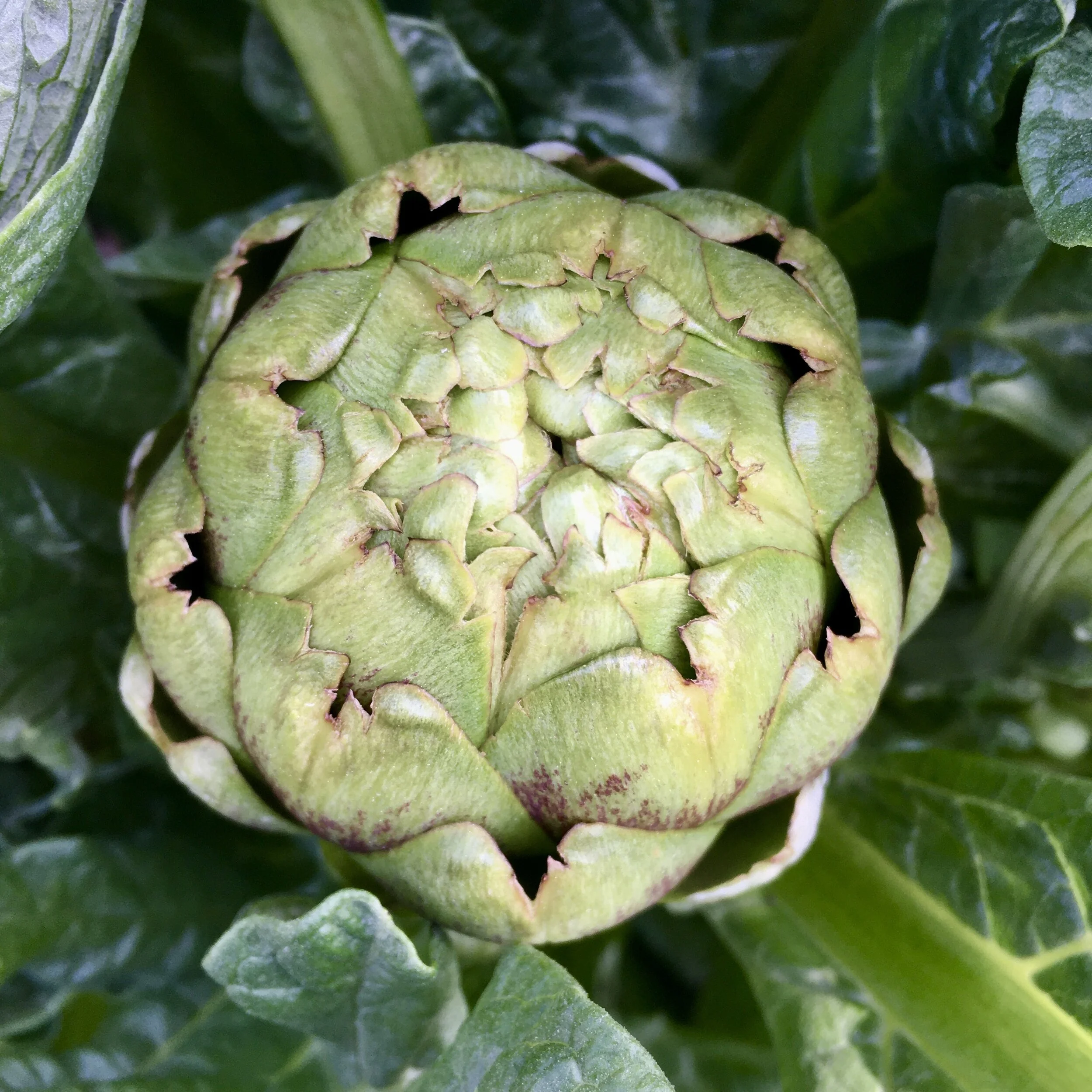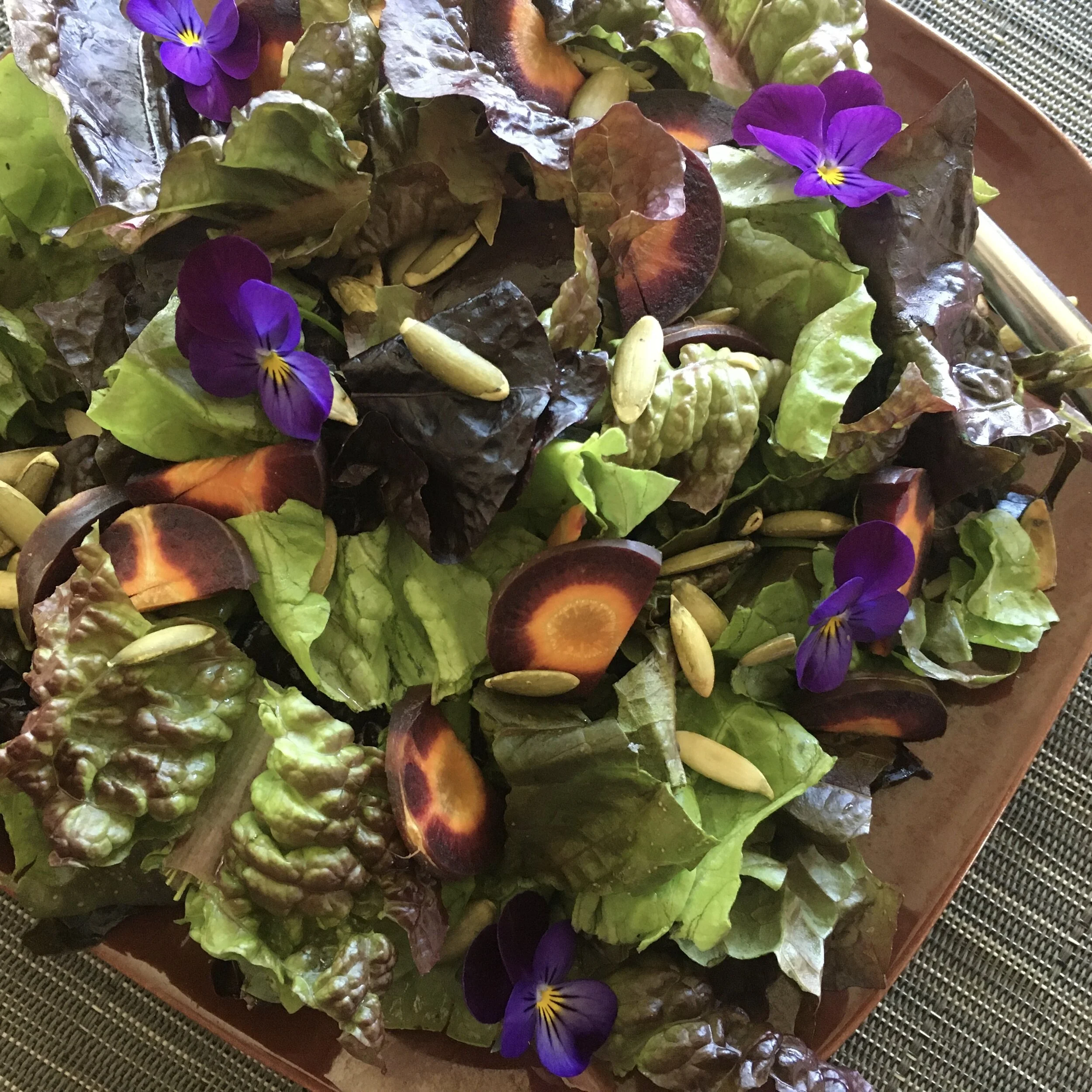In My San Diego Garden and Kitchen
The winter garden, or as some call it the second season garden, enters the transition time where the productive crops from earlier months like cauliflower have finished their run and slower vegetables such as cabbage, carrots and beets linger. There are a few empty spaces in the raised beds now. I’ll remove the bolted arugula this week, though the flowers are charming and useful. The snow peas are setting seed and looking ratty. With the warm weather ahead I expect the winter lettuce to bolt and aphids to appear soon. The spinach has part shade, so it will remain productive. Neighboring radishes are now in the fridge and the spring onions grow at an acceptable pace and are available whenever I need them. Sweet peas, calendulas and stock add color, fragrance and attract beneficial insects to the vegetable garden.
Broccoli is a staple of the winter garden for many months. I harvested the first heads in early January from six plants. A second set of six planted a few weeks later yielded more heads in a timely way. The side shoots were slower this year which I attribute to the cool, rainy months. But even now I’m harvesting enough broccoli for dinner, as in the photo above, at least three days a week. The side shoots will decrease in size soon and I’ll decide with the diminishing returns, it’s time to prepare the raised bed for tomatoes.
I remarked to my husband this week that maybe we should “summer” in the winter of western Australia or Chile so I can have a second winter garden each year. But then I would miss tomatoes.
Most of my harvests at this time of the year are only what I need for a meal. This is what I grabbed for dinner last night. With the cool, wet winter and slow spring the celery is still delightfully crisp and free of any bitterness. With four kinds of lettuce growing, I preferentially harvest the ones I suspect will bolt soon and step up my lettuce giveaway.
As the navel orange season winds down, a opossum and possibly a hooded oriole have diminished the crop. We decided to pick the remainder for final uses and distribution. Our navel orange crop this year provided hundreds of oranges—maybe 500 or more; plenty to share with friends and family and enough to have orange juice most mornings and make sixty jars of orange marmalade. I’ve pulled out my folder of orange recipes and so will use the last of the oranges for some of my favorites. I’ll also freeze orange zest and small amounts of orange juice for use during the year. See yesterday’s post on Sweetened Oven Dried Oranges.
On cue with spring, the sweet peas began blooming exuberantly in the last two weeks. This photo doesn’t capture the full glory or the fragrance these bicolor sweet peas. I’ve shared my seed, grown for over twenty years here in Point Loma, with San Diego Seed Company. Next year you’ll be able to purchase the bicolor sweet pea seeds there.
See what other garden bloggers harvested last week in their gardens at Harvest Monday hosted by Dave at Our Happy Acres.

